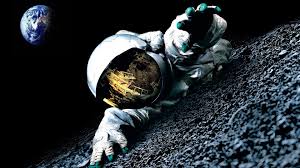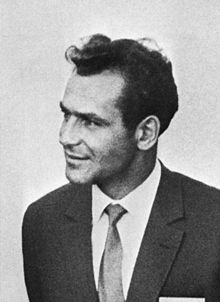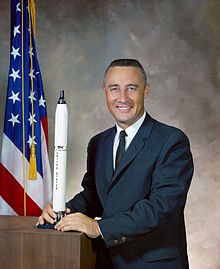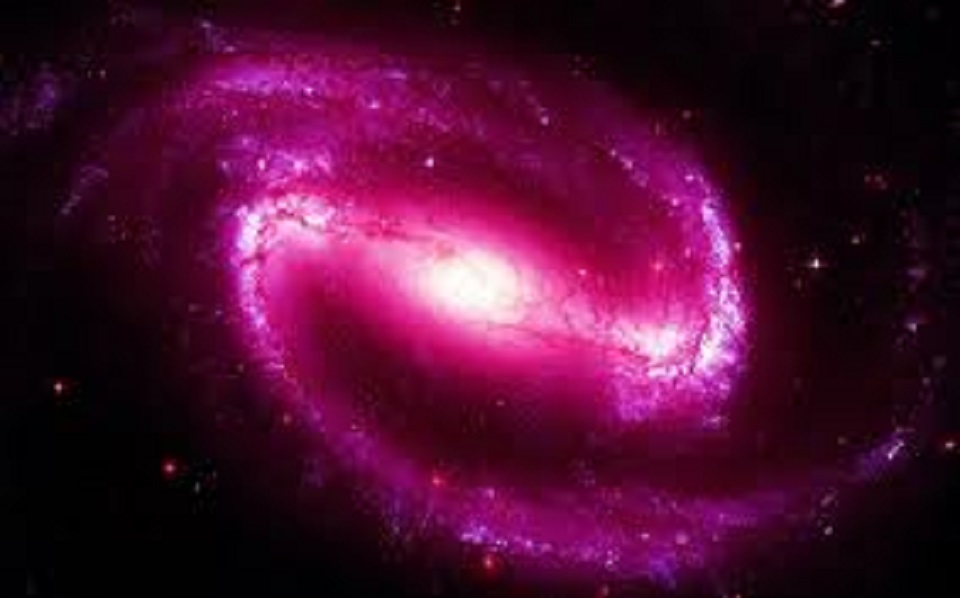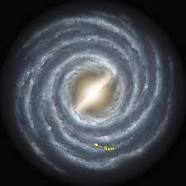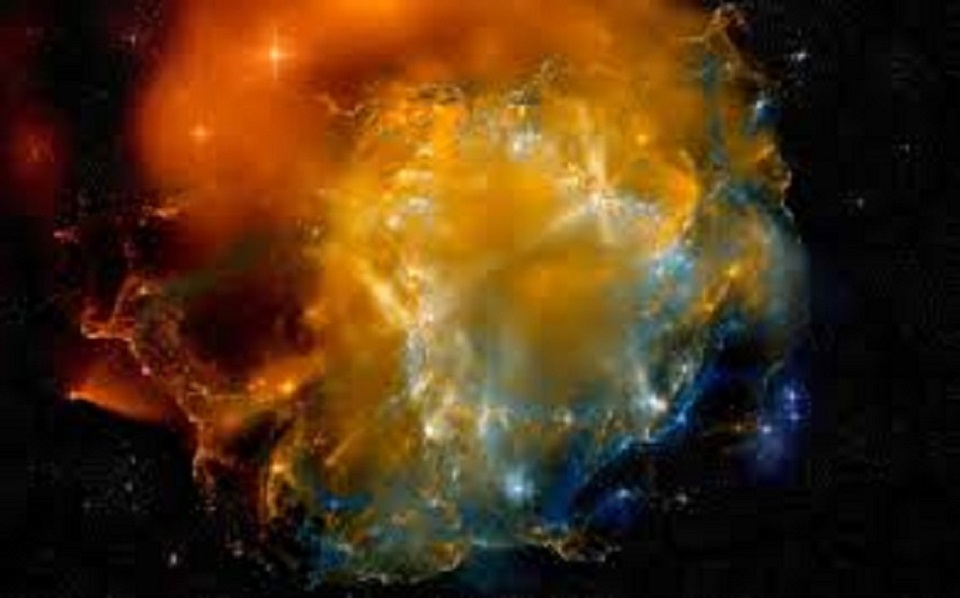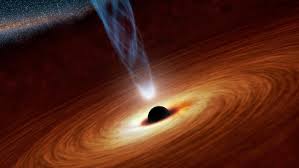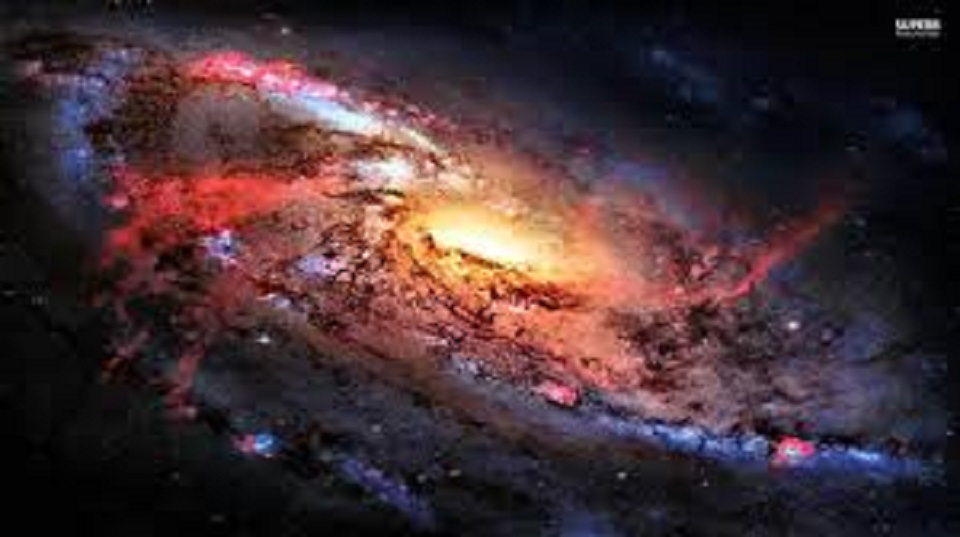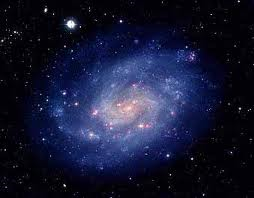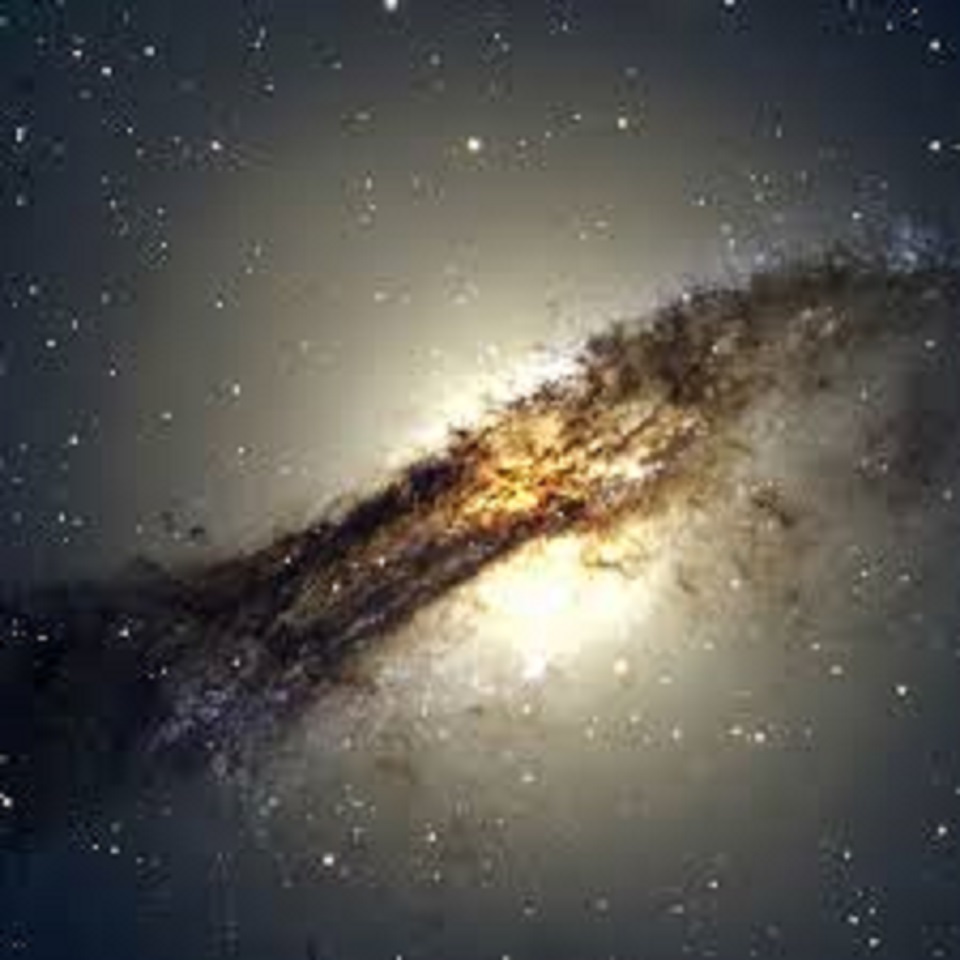Origin
of Universe :-
According to the
Boshongo people of central Africa, in the beginning, there was only
darkness, water, and the great god Bumba. One day Bumba, in pain
from a stomach ache, vomited up the sun. The sun dried up some of
the water, leaving land. Still in pain, Bumba vomited up the moon,
the stars, and then some animals. The leopard, the crocodile, the
turtle, and finally, man.This creation
myth, like many others, tries to answer the questions we all ask.
Why are we here? Where did we come from? The answer generally given
was that humans were of comparatively recent origin, because it
must have been obvious, even at early times, that the human race
was improving in knowledge and technology. So it can't have been
around that long, or it would have progressed even more. For
example, according to Bishop Usher, the Book of Genesis placed the
creation of the world at 9 in the morning on October the 27th,
4,004 BC. On the other hand, the physical surroundings, like
mountains and rivers, change very little in a human lifetime. They
were therefore thought to be a constant background, and either to
have existed forever as an empty landscape, or to have been created
at the same time as the humans. Not everyone, however, was happy
with the idea that the universe had a beginning.
For example,
Aristotle, the most famous of the Greek philosophers, believed the
universe had existed forever. Something eternal is more perfect
than something created. He suggested the reason we see progress was
that floods, or other natural disasters, had repeatedly set
civilization back to the beginning. The motivation for believing in
an eternal universe was the desire to avoid invoking divine
intervention to create the universe and set it going. Conversely,
those who believed the universe had a beginning, used it as an
argument for the existence of God as the first cause, or prime mover, of the
universe.If one believed
that the universe had a beginning, the obvious question was what
happened before the beginning? What was God doing before He made
the world? Was He preparing Hell for people who asked such
questions? The problem of whether or not the universe had a
beginning was a great concern to the German philosopher, Immanuel
Kant. He felt there were logical contradictions, or antimonies,
either way. If the universe had a beginning, why did it wait an
infinite time before it began? He called that the thesis. On the
other hand, if the universe had existed for ever, why did it take
an infinite time to reach the present stage? He called that the
antithesis. Both the thesis and the antithesis depended on Kant's
assumption, along with almost everyone else, that time was
Absolute. That is to say, it went from the infinite past to the
infinite future, independently of any universe that might or might
not exist in this background. This is still the picture in the mind
of many scientists today.
However
in 1915, Einstein introduced his revolutionary General Theory of
Relativity. In this, space and time were no longer Absolute, no
longer a fixed background to events. Instead, they were dynamical
quantities that were shaped by the matter and energy in the
universe. They were defined only within the universe, so it made no
sense to talk of a time before the universe began. It would be like
asking for a point south of the South Pole. It is not defined. If
the universe was essentially unchanging in time, as was generally
assumed before the 1920s, there would be no reason that time should
not be defined arbitrarily far back. Any so-called beginning of the
universe would be artificial, in the sense that one could extend
the history back to earlier times. Thus it might be that the
universe was created last year, but with all
the memories and physical evidence, to look like it was much older.
This raises deep philosophical questions about the meaning of
existence. I shall deal with these by adopting what is called, the
positivist approach. In this, the idea is that we interpret the
input from our senses in terms of a model we make of the world. One
can not ask whether the model represents reality, only whether it
works. A model is a good model if first it interprets a wide range
of observations, in terms of a simple and elegant model. And
second, if the model makes definite predictions that can be tested
and possibly falsified by observation.
In
terms of the positivist approach, one can compare two models of the
universe. One in which the universe was created last year and one
in which the universe existed much longer. The Model in which the
universe existed for longer than a year can explain things like
identical twins that have a common cause more than a year ago. On
the other hand, the model in which the universe was created last
year cannot explain such events. So the first model is better. One
can not ask whether the universe really existed before a year ago
or just appeared to. In the positivist approach, they are the same.
In an unchanging universe, there would be no natural starting
point. The situation changed radically however, when Edwin Hubble
began to make observations with the hundred inch telescope on Mount
Wilson, in the 1920s.
Hubble found that
stars are not uniformly distributed throughout space, but are
gathered together in vast collections called galaxies. By measuring
the light from galaxies, Hubble could determine their velocities.
He was expecting that as many galaxies would be moving towards us
as were moving away. This is what one would have in a universe that
was unchanging with time. But to his surprise, Hubble found that
nearly all the galaxies were moving away from us. Moreover, the
further galaxies were from us, the faster they were moving away.
The universe was not unchanging with time as everyone had thought
previously. It was expanding. The distance between distant galaxies
was increasing with time.The expansion of
the universe was one of the most important intellectual discoveries
of the 20th century, or of any century. It transformed the debate
about whether the universe had a beginning. If galaxies are moving
apart now, they must have been closer together in the past. If
their speed had been constant, they would all have been on top of
one another about 15 billion years ago. Was this the beginning of
the universe? Many scientists were still unhappy with the universe
having a beginning because it seemed to imply that physics broke
down. One would have to invoke an outside agency, which for
convenience, one can call God, to determine how the universe began.
They therefore advanced theories in which the universe was
expanding at the present time, but didn't have a beginning. One was
the Steady State theory, proposed by Bondi, Gold, and Hoyle in
1948.
In
the Steady State theory, as galaxies moved apart, the idea was that
new galaxies would form from matter that was supposed to be
continually being created throughout space. The universe would have
existed for ever and would have looked the same at all times. This
last property had the great virtue, from a positivist point of
view, of being a definite prediction that could be tested by
observation. The Cambridge radio astronomy group, under Martin
Ryle, did a survey of weak radio sources in the early 1960s. These
were distributed fairly uniformly across the sky, indicating that
most of the sources lay outside our galaxy. The weaker sources
would be further away, on average. The Steady State theory
predicted the shape of the graph of the number of sources against
source strength. But the observations showed more faint sources
than predicted, indicating that the density sources were higher in
the past. This was contrary to the basic assumption of the Steady
State theory, that everything was constant in time. For this, and
other reasons, the Steady State theory was abandoned.
Another
attempt to avoid the universe having a beginning was the suggestion
that there was a previous contracting phase, but because of
rotation and local irregularities, the matter would not all fall to
the same point. Instead, different parts of the matter would miss
each other, and the universe would expand again with the density
remaining finite. Two Russians, Lifshitz and Khalatnikov, actually
claimed to have proved, that a general contraction without exact
symmetry would always lead to a bounce with the density remaining
finite. This result was very convenient for Marxist Leninist
dialectical materialism, because it avoided awkward questions about
the creation of the universe. It therefore became an article of
faith for Soviet scientists.
When
Lifshitz and Khalatnikov published their claim, I was a 21 year old
research student looking for something to complete my PhD thesis. I
didn't believe their so-called proof, and set out with Roger
Penrose to develop new mathematical techniques to study the
question. We showed that the universe couldn't bounce. If
Einstein's General Theory of Relativity is correct, there will be a
singularity, a point of infinite density and spacetime curvature,
where time has a beginning. Observational evidence to confirm the
idea that the universe had a very dense beginning came in October
1965, a few months after my first singularity result, with the
discovery of a faint background of microwaves throughout space.
These microwaves are the same as those in your microwave oven, but
very much less powerful. They would heat your pizza only to minus
271 point 3 degrees centigrade, not much good for defrosting the
pizza, let alone cooking it. You can actually observe these
microwaves yourself. Set your television to an empty channel. A few
percent of the snow you see on the screen will be caused by this
background of microwaves. The only reasonable interpretation of the
background is that it is radiation left over from an
early very hot and dense state. As the universe expanded, the
radiation would have cooled until it is just the faint remnant we
observe today.
Although
the singularity theorems of Penrose and myself, predicted that the
universe had a beginning, they didn't say how it had begun. The
equations of General Relativity would break down at the
singularity. Thus Einstein's theory cannot predict how the universe
will begin, but only how it will evolve once it has begun. There
are two attitudes one can take to the results of Penrose and
myself. One is to that God chose how the universe began for reasons
we could not understand. This was the view of Pope John Paul. At a
conference on cosmology in the Vatican, the Pope told the delegates
that it was OK to study the universe after it began, but they
should not inquire into the beginning itself, because that was the
moment of creation, and the work of God. I was glad he didn't
realize I had presented a paper at the conference suggesting how
the universe began. I didn't fancy the thought of being handed over
to the Inquisition, like Galileo.
The other
interpretation of our results, which is favored by most scientists,
is that it indicates that the General Theory of Relativity breaks
down in the very strong gravitational fields in the early universe.
It has to be replaced by a more complete theory. One would expect
this anyway, because General Relativity does not take account of the small scale structure of
matter, which is governed by quantum theory. This does not matter
normally, because the scale of the universe is enormous compared to
the microscopic scales of quantum theory. But when the universe is
the Planck size, a billion trillion trillionth of a
centimeter, the two scales are the same, and quantum theory has to
be taken into account.In order to
understand the Origin of the universe, we need to combine the
General Theory of Relativity with quantum theory. The best way of
doing so seems to be to use Feynman's idea of a sum over histories.
Richard Feynman was a colorful character, who played the bongo
drums in a strip joint in Pasadena, and was a brilliant physicist
at the
California Institute
of
Technology. He proposed that a system got from a state A, to a
state B, by every possible path or history. Each path or history
has a certain amplitude or intensity, and the probability of the
system going from A- to B, is given by adding up the amplitudes for
each path. There will be a history in which the moon is made of
blue cheese, but the amplitude is low, which is bad news for
mice.
The
probability for a state of the universe at the present time is
given by adding up the amplitudes for all the histories that end
with that state. But how did the histories start? This is the
Origin question in another guise. Does it require a Creator to
decree how the universe began? Or is the initial state of the
universe, determined by a law of science? In fact, this question
would arise even if the histories of the universe went back to the
infinite past. But it is more immediate if the universe began only
15 billion years ago. The problem of what happens at the beginning
of time is a bit like the question of what happened at the edge of
the world, when people thought the world was flat. Is the world a
flat plate with the sea pouring over the edge? I have tested this
experimentally. I have been round the world, and I have not fallen
off. As we all know, the problem of what happens at the edge of the
world was solved when people realized that the world was not a flat
plate, but a curved surface. Time however, seemed to be different.
It appeared to be separate from space, and to be like a model
railway track. If it had a beginning, there would have to be
someone to set the trains going. Einstein's General Theory of
Relativity unified time and space as spacetime, but time was still
different from space and was like a corridor, which either had a
beginning and end, or went on forever. However, when one combines
General Relativity with Quantum Theory, Jim Hartle and I realized
that time can behave like another direction in space under extreme
conditions. This means one can get rid of the problem of time
having a beginning, in a similar way in which we got rid of the
edge of the world. Suppose the beginning of the universe was like
the South Pole of the earth, with degrees of latitude playing the role of
time. The universe would start as a point at the South Pole. As one
moves north, the circles of constant latitude, representing the
size of the universe, would expand. To ask what happened before the
beginning of the universe would become a meaningless question,
because there is nothing south of the South Pole.
Time,
as measured in degrees of latitude, would have a beginning at the
South Pole, but the South Pole is much like any other point, at
least so I have been told. I have been to Antarctica, but not to
the South Pole. The same laws of Nature hold at the South Pole as
in other places. This would remove
the age-old objection to the universe having a beginning; that it
would be a place where the normal laws broke down. The beginning of
the universe would be governed by the laws of science. The picture
Jim Hartle and I developed of the spontaneous quantum creation of
the universe would be a bit like the formation of bubbles of steam
in boiling water.
The
idea is that the most probable histories of the universe would be
like the surfaces of the bubbles. Many small bubbles would appear,
and then disappear again. These would correspond to mini universes
that would expand but would collapse again while still of
microscopic size. They are possible alternative universes but they
are not of much interest since they do not last long enough to
develop galaxies and stars, let alone intelligent life. A few of
the little bubbles, however, grow to a certain size at which they
are safe from recollapse. They will continue to expand at an ever
increasing rate, and will form the bubbles we see. They will
correspond to universes that would start off expanding at an ever
increasing rate. This is called inflation, like the way prices go
up every year.
The
world record for inflation was in Germany after the First World
War. Prices rose by a factor of ten million in a period of 18
months. But that was nothing compared to inflation in the early
universe. The universe expanded by a factor of million trillion
trillion in a tiny fraction of a second. Unlike inflation in
prices, inflation in the early universe was a very good thing. It
produced a very large and uniform universe, just as we observe.
However, it would not be completely uniform. In the sum over
histories, histories that are very slightly irregular will have
almost as high probabilities as the completely uniform and regular
history. The theory therefore predicts that the early universe is
likely to be slightly non-uniform. These irregularities would
produce small variations in the intensity of the microwave
background from different directions. The microwave background has
been observed by the Map satellite, and was found to have exactly
the kind of variations predicted. So we know we are on the right
lines.
The
irregularities in the early universe will mean that some regions
will have slightly higher density than others. The gravitational
attraction of the extra density will slow the expansion of the
region, and can eventually cause the region to collapse to form
galaxies and stars. So look well at the map of the microwave sky.
It is the blue print for all the structure in the universe. We are
the product of quantum fluctuations in the very early universe. God
really does play dice.
We
have made tremendous progress in cosmology in the last hundred
years. The General Theory of Relativity and the discovery of the
expansion of the universe shattered the old picture of an ever
existing and ever lasting universe. Instead, general relativity
predicted that the universe, and time itself, would begin in the
big bang. It also predicted that time would come to an end in black
holes. The discovery of the cosmic microwave background and
observations of black holes support these conclusions. This is a
profound change in our picture of the universe and of reality
itself. Although the General Theory of Relativity predicted that
the universe must have come from a period of high curvature in the
past, it could not predict how the universe would emerge from the
big bang. Thus general relativity on its own cannot answer the
central question in cosmology: Why is the universe the way it is?
However, if general relativity is combined with quantum theory, it
may be possible to predict how the universe would start. It would
initially expand at an ever increasing rate.
During
this so called inflationary period, the marriage of the two
theories predicted that small fluctuations would develop and lead
to the formation of galaxies, stars, and all the other structure in
the universe. This is confirmed by observations of small non
uniformities in the cosmic microwave background, with exactly the
predicted properties. So it seems we are on our way to
understanding the origin of the universe, though much more work
will be needed. A new window on the very early universe will be
opened when we can detect gravitational waves by accurately
measuring the distances between space craft. Gravitational waves
propagate freely to us from earliest times, unimpeded by any
intervening material. By contrast, light is scattered many times by
free electrons. The scattering goes on until the electrons freeze
out, after 300,000 years.
Despite
having had some great successes, not everything is solved. We do
not yet have a good theoretical understanding of the observations
that the expansion of the universe is accelerating again, after a
long period of slowing down. Without such an understanding, we
cannot be sure of the future of the universe. Will it continue to
expand forever? Is inflation a law of Nature? Or will the universe
eventually collapse again? New observational results and
theoretical advances are coming in rapidly. Cosmology is a very
exciting and active subject. We are getting close to answering the
age old questions. Why are we here? Where did we come
from?


